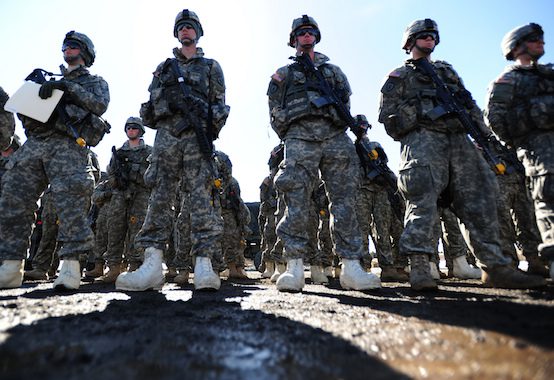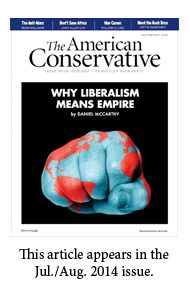A Canon for the Officer Corps

My column in the March/April issue, “An Officer Corps That Can’t Score,” brought a number of responses. Among the more thoughtful was the question, “If becoming military professionals requires that we read books, what books should be read?”
The first answer is, “A lot of them.” When Marine Corps General John Kelly met several years ago with the seminar I taught for the Marines’ Expeditionary Warfare School, he told my students (captains), “I read a thousand books, then I understood war.”
Fortunately, there are Cliff’s Notes: the canon, a list of seven books that, if read in the order given, will take the student from the First Generation of modern war (1650-1865) into the Fourth (the present and future). They are not a substitute for General Kelly’s thousand books, but they offer an intellectual framework without which it is difficult to make sense of events, whether historical or current.
The first book is Charles E. White’s The Enlightened Soldier. It is a biography of Gerhard von Scharnhorst, who led the successful Prussian military reform movement that followed Prussia’s defeat by Napoleon in 1806. This book explains why you are reading the rest of the canon. Scharnhorst lived at the beginning of the professionalization of European officer corps, an effort in which he played a central part. The Enlightened Soldier focuses on his work to educate other Prussian officers, including a lieutenant named Clausewitz, to get them reading, writing, and discussing ideas about war. When I taught a seminar at Quantico on the canon, my students, Marine officers, said this was their favorite book.
The second book is Robert Doughty’s The Seeds of Disaster. Doughty was the longtime chairman of the Military History department at West Point, and he is the top English-language expert on the French Army in the 20th century. The French Army developed Second Generation war during and after World War I, and the U.S. Army and Marine Corps absorbed it from the French. The Seeds of Disaster is the history of our military doctrine. Every American officer to whom I have loaned my copy has said when returning it, “This is us.” It is the only somewhat dry book in the canon, but the reader may skip the parts on French Army organization. It is the doctrinal development that is essential.
The next book, Stormtroop Tactics by Bruce Gudmundsson, is the history of the development of Third Generation maneuver warfare by the German Army in World War I. Blitzkrieg was conceptually complete by 1918. Not merely new tactics, the Third Generation also embodied a radically different military culture, one with roots in Prussia that went back to the Scharnhorst reforms. This culture focused outward on the situation, the enemy, and the result the situation required rather than inward on orders, rules, processes, etc. The reader will quickly perceive that our U.S. armed forces are tactically and culturally almost 100 years out of date. 
The next three books directly compare the Second and Third Generations. Book four, Martin Samuel’s Command or Control?, compares British and German tactics and doctrine from the late 19th century into World War I. There is good reason why the British Army has often been described as lions led by asses. Book five is again by Robert Doughty, The Breaking Point. This volume, which is not dry, is the story of what happened when the Second and Third Generations met head-on in the German campaign against France in 1940. France had more tanks and better tanks than the Germans; she was defeated by her own doctrine, which we still follow. Book six, Martin van Creveld’s Fighting Power, compares and contrasts the Second Generation U.S. Army in World War II with the Wehrmacht—not on the battlefield but as institutions. What emerges is two radically different institutional cultures, each consistent with its army’s doctrine.
The final book in the canon is again by Martin van Creveld, and it is the most important book written thus far on Fourth Generation war: The Transformation of War. Creveld describes the state’s loss of the monopoly on war it established in the Peace of Westphalia and the consequences thereof, including how state armed forces now find themselves fighting non-state entities to which they usually lose.
So the canon. If a bold reader thinks he might manage more than seven books, there are two others I would recommend. The first is Creveld’s The Rise and Decline of the State. Although written after The Transformation of War, it is functionally a prequel in that it offers the history on which the theory in Transformation is based.
The second book is the best naval history in decades, Andrew Gordon’s The Rules of the Game. The Royal Navy developed Third Generation war starting around the middle of the 18th century and had effectively institutionalized it by the Napoleonic Wars. The Rules of the Game tells the story of how and why they lost it in the 19th century and returned to inward-focused rigidity. It is a tale with much contemporary relevance, as signaling lies at its heart.
Were the American military intellectually serious, our services would require that the canon be read by all officers, at least by the time they are majors. (I would recommend before commissioning.) But it is not. The canon, while not called that, was previously listed in order on the official Marine Corps Commandant’s Reading List. In the latest version, all the books are gone. The Corps’ new motto, it seems, is lege minus curre magis—read less, run more.
William S. Lind is the author of the Maneuver Warfare Handbook.
Comments